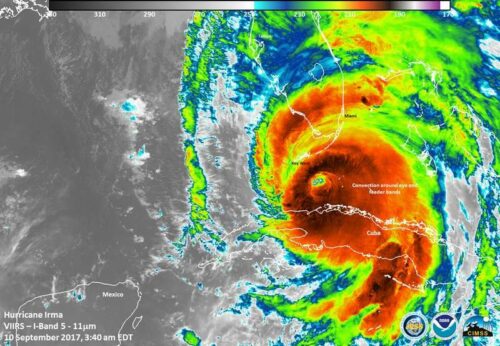Researchers have developed a way to design hurricane-resistant buildings by simulating 1000s of hurricanes with the help of artificial intelligence(AI).

Engineers find the level of wind their structure must be able to handle based on the location and its relative importance (i.e., the bar is higher for a hospital than for a self-storage facility). The wind speeds in the weather maps are derived from scores of hypothetical hurricanes simulated by computer models, which are themselves based on real-life hurricane records. Being able to withstand hurricane-force winds is the key to a long life for many buildings. Determining the right level of winds to design for is tricky business, but support from artificial intelligence may offer a simple solution.
Researchers at the National Institute of Standards and Technology (NIST) have devised a new method, equipped with 100 years of hurricane data and modern AI techniques, of digitally simulating hurricanes. Researchers believe that simulating numerous realistic hurricanes with the new approach can help to develop improved guidelines for the design of buildings in hurricane-prone regions. They have demonstrated that the simulations can accurately represent the trajectory and wind speeds of a collection of actual storms.
Advanced AI techniques can study and simulate these hurricanes in a more realistic manner. Therefore, NIST postdoctoral researcher Rikhi Bose, together with mathematical statistician Adam Pintar, and NIST Fellow Emil Simiu, used these new techniques and resources to tackle the issue from a different angle. Rather than having their model mathematically build a storm from the ground up, they taught it to mimic actual hurricane data with machine learning.
The researchers split data on more than 1,500 storms, from the National Hurricane Center’s Atlantic Hurricane Database (HURDAT2), into sets for training and testing their model. When challenged with concurrently simulating the trajectory and wind of historical storms it had not seen before, the model scored highly. They also used the model to generate sets of 100 years’ worth of hypothetical storms. It produced the simulations in a matter of seconds, and the authors saw a large degree of overlap with the general behavior of the HURDAT2 storms, suggesting that their model could rapidly produce collections of realistic storms.
As a next step, the team plans to use simulated hurricanes to develop coastal maps of extreme wind speeds as well as quantify uncertainty in those estimated speeds.
Reference : Rikhi Bose et al, Simulation of Atlantic Hurricane Tracks and Features: A Coupled Machine Learning Approach, Artificial Intelligence for the Earth Systems (2023). DOI: 10.1175/AIES-D-22-0060.1







